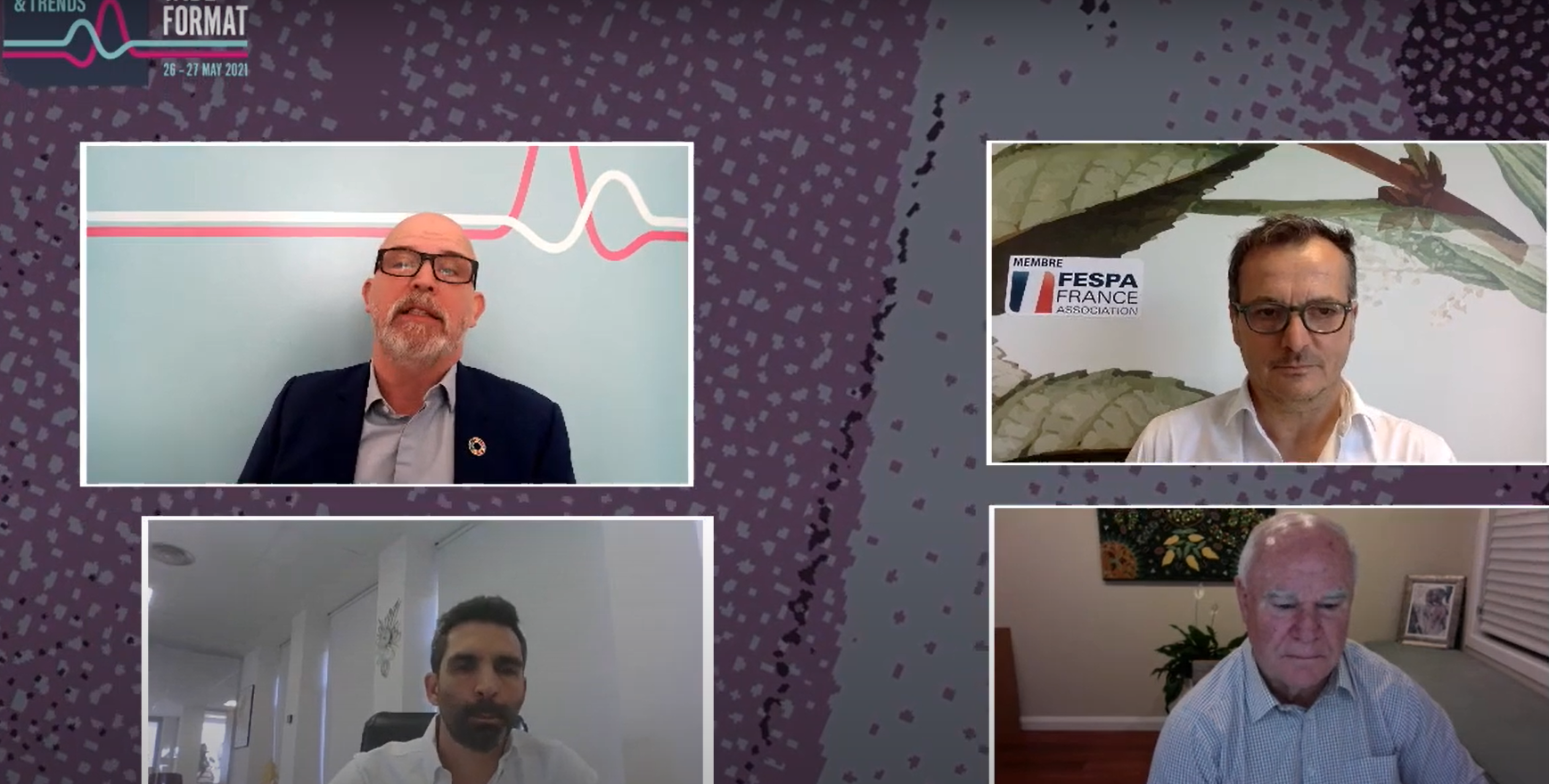Wide Format Trend Talk: Web To Print
.png?width=750)
In our recent FESPA Innovation & Trends (FIT) virtual event for wide format print, we brought together three printers from different countries to discuss trends in wide format and hear their thoughts on what the future holds.
The host: Graeme Richardson-Locke: Technical Support Manager, FESPA. With 35 years’ experience in the industry, Graeme began as an apprentice and progressed through several directorships before joining FESPA in his current role. He is also a member of the Academy of Screen and Digital Printing Technologies.
The experts: Christophe Aussenac: FESPA’s President-Elect and Founder of the ATC group, France, which he established in 1991 and has taken the lead in developing sustainable solutions for its clients in point of sale and wide format graphics.
Keith Ferrel: General Manager of Operations at Cactus Imaging based in Sydney, Australia, which specialises in large-scale outdoor advertising applications and retail point of sale using the latest digital technology.
Javier Rodriguez Centeno: Director General of Grupo Panorama, Spain, a leading printer for retail, events and visual communication.
The Question: Do you see an opportunity for B2B print businesses using workflow automation and web-to-print, to build revenue from B2C clients?
Javier: Yes, of course. We were thinking about this 10 years ago maybe, but we weren't prepared. We were doing some tests with different systems and we wanted to be more flexible, faster and automatic. This is a great challenge because it's hard to imagine what you need and it's hard to do it because we are not IT people, even if we try to be.
In B2C we have several platforms and from the moment the customer pushes the button until it’s printed, everything is automated. We sell our cheapest product for about €5, if you want to earn money with €5, you'd have to automate everything. It's a complex network and a complex framework with a lot of programmes that talk to each other. However, it keeps us connected with the customer and allows us to do everything very fast.
In the case of B2B, it's similar. The necessities are so urgent that we did it for B2B too and because we are traditionally a B2B company, it was easier. What we do here is connect our customers with the factory through our key account managers, who work with the rest of the company digitally. We are a 4.0 factory; we don't work with paper here in the office. We print a lot of paper, but we are completely digital.
We are much faster than we have been in the past. Right now, we can send a quotation in an average of 13 minutes, which is really fast in graphics. Previously, this has taken between 24 and 36 hours. We connect the customers to the factory through our key account managers and they have complete sight of the process. Our customers have their own special platform where they can upload and check their artwork to prove everything is okay. I think this is the way we have to do it, because in the future, there will be less people and more machines. Automation is the future.
Keith: Workflow automation is very, very important. I'll probably use an analogy to put it into some sort of context. 10 years ago in the outdoor industry, outdoor advertising sites used to change on average two change-outs per year. Today, they're every four weeks and soon we're going to fortnightly change-outs. Workflow automation is incredibly important for us. It probably adds up to, are your clients looking to simplify the ordering process? For us, yes, they are.
You can see the whole conversation here, and for more information on FESPA Innovations and Trends events, visit here.
Discover the latest innovations in wide format printing at the Global Print Expo 2021, Europe's leading exhibition for screen and digital wide format print, textile printing and signage. Discover the latest products, network with like-minded individuals and explore new business opportunites. Register now and use promo code FESH101 to receive a discount of 30 euros.
Interested in joining our community?
Enquire today about joining your local FESPA Association or FESPA Direct
Recent news

The importance of ink for large format printers
Ink is crucial for large format inkjet printers, influencing substrate compatibility, productivity, and cost. Nessan Cleary discusses the three main types which include UV-curable ink, latex ink and eco-solvent ink. Each ink type has specific strengths and weaknesses, making printers choice dependent on budget and intended applications.

What are the benefits of Direct-To-Fabric printing?
Direct-to-fabric printing is gaining popularity for high-volume textile production, enabling on-demand, customized short runs. These printers offer ink flexibility, accommodating various fabric types like cotton and silk, though ink development focuses on faster turnaround by reducing pre- and post-processing. Compared to traditional methods, direct-to-fabric inkjet printing is a more sustainable option due to reduced water and chemical usage, and localized production.

What are the opportunities for large format providers regarding digital touch screens?
Digital touchscreens are becoming increasingly common, offering businesses opportunities to improve customer engagement and streamline operations. Nessan Cleary shares, while more expensive to implement than standard digital displays due to complex software and integration needs, touchscreens provide self-service options, multilingual support, and can reduce staffing costs in various settings like retail, transportation, and healthcare.
